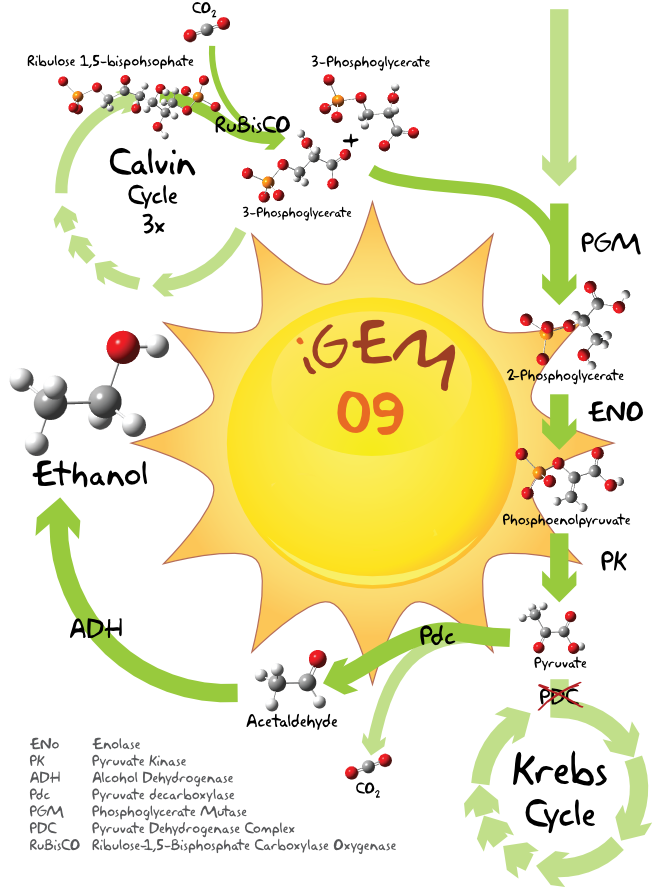Team:Uppsala-Sweden/Ethanol
From 2009.igem.org
(Difference between revisions)
Karl.brune (Talk | contribs) |
Karl.brune (Talk | contribs) (→The Pathway) |
||
| Line 1: | Line 1: | ||
==The Pathway== | ==The Pathway== | ||
| - | + | Light energy is used in the Calvin cycle to transform water and carbon dioxide into organic compounds, among those is Ribulose-1,5-bisphosphate, which immediately splits into two 3-Phosphoglycerate molecules. [[#ref2|<nowiki>[2]</nowiki>]] These two molecules can now be converted to 2-Phosphoglycerate. Enolase and pyruvatekinase finally catalyze then the reaction over phosphoenolpyruvate to pyruvate. [[#ref3|<nowiki>[3]</nowiki>]] This pyruvate molecule is now substrate for the ethanol production. A nice overview be found further [[#refview|<nowiki>down</nowiki>]]. | |
<center> | <center> | ||
[[Image:ethanolpath_horizontal.png]] | [[Image:ethanolpath_horizontal.png]] | ||
</center> | </center> | ||
| - | |||
| - | |||
blabal mechanism | blabal mechanism | ||
Revision as of 22:17, 21 October 2009
The Pathway
Light energy is used in the Calvin cycle to transform water and carbon dioxide into organic compounds, among those is Ribulose-1,5-bisphosphate, which immediately splits into two 3-Phosphoglycerate molecules. [2] These two molecules can now be converted to 2-Phosphoglycerate. Enolase and pyruvatekinase finally catalyze then the reaction over phosphoenolpyruvate to pyruvate. [3] This pyruvate molecule is now substrate for the ethanol production. A nice overview be found further down.
blabal mechanism
References
[2] Jeremy M. Berg, John L. Tymoczko, L. Stryer Biochemistry 5th Edition; Ch.21.1 p826-838
[3] Jeremy M. Berg, John L. Tymoczko, L. Stryer Biochemistry 5th Edition; Ch.16.1 p653
 "
"





